This post may contain affiliate links. See my disclosure policy.
This pan-seared salmon features lightly seasoned salmon fillets seared until they’re buttery, soft, and flaky, with a savory, crisp skin. Ready in under 10 minutes, it’s a restaurant-worthy dish!
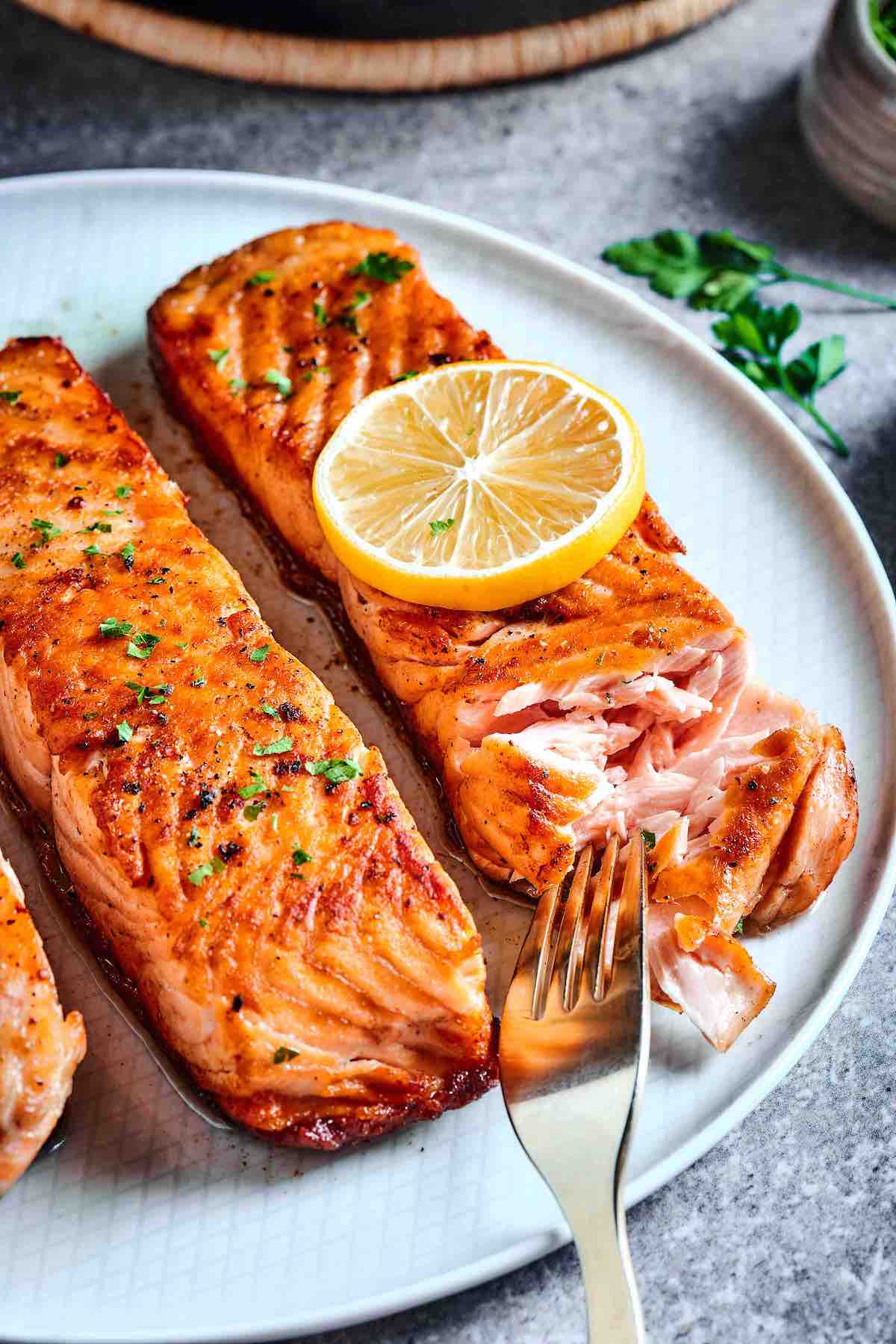
★★★★★ REVIEW
“Wow! What a great recipe this is, I’ve made this as you do, but not in years. I loved it so much and so did my family. Thanks!” – Laura
Table of Contents
I make my pan-seared salmon recipe for those hectic weeknights when my family craves salmon but I’m short on time. With simple seasonings, the fish’s natural flavor shines through. Searing it at high heat for a short time gives the outside a gorgeous, crispy skin while keeping the center flaky and tender. It’s quick and easy to make and so versatile- Salads, veggies, potatoes, or even over a salmon bowl; the possibilities of how to serve this salmon are endless.
If you love pan-seared seafood, try my pan-seared orange roughy, pan-seared coho salmon, pan-seared rockfish, and barramundi next.
Ingredients needed
- Salmon. Use skin-on salmon fillets, as the skin crisps up nicely once it touches the hot pan, creating an additional layer of flavor and texture.
- Butter. It gives the seared fish a rich flavor and creates the most amazing golden crust.
- Olive oil. Adding a small amount of oil to the pan will help prevent the butter from burning. If you don’t like cooking with butter, use only oil.
- Kosher salt and black pepper. To taste.
How to pan sear salmon
This is an overview with step-by-step photos. Full ingredients & instructions are in the recipe card below.
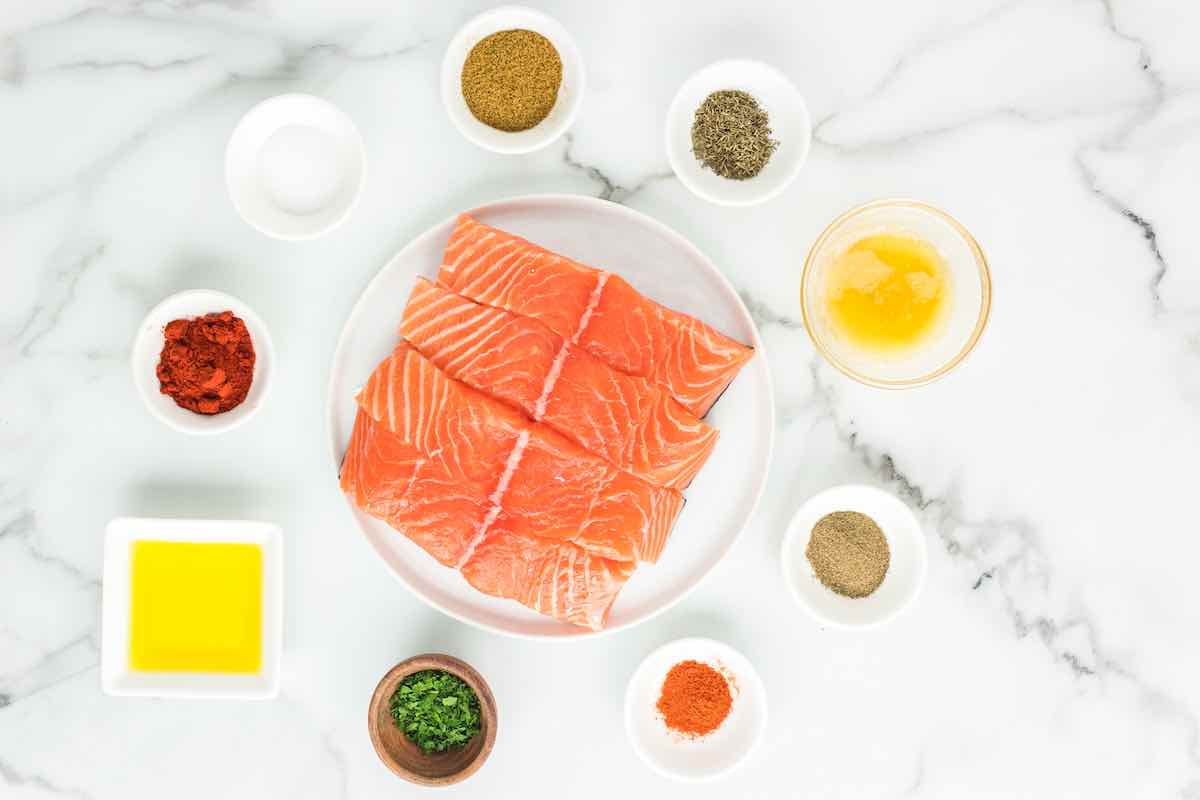
Step 1- Prepare. Pat the fillets dry with paper towels and season them with salt and pepper on both sides.
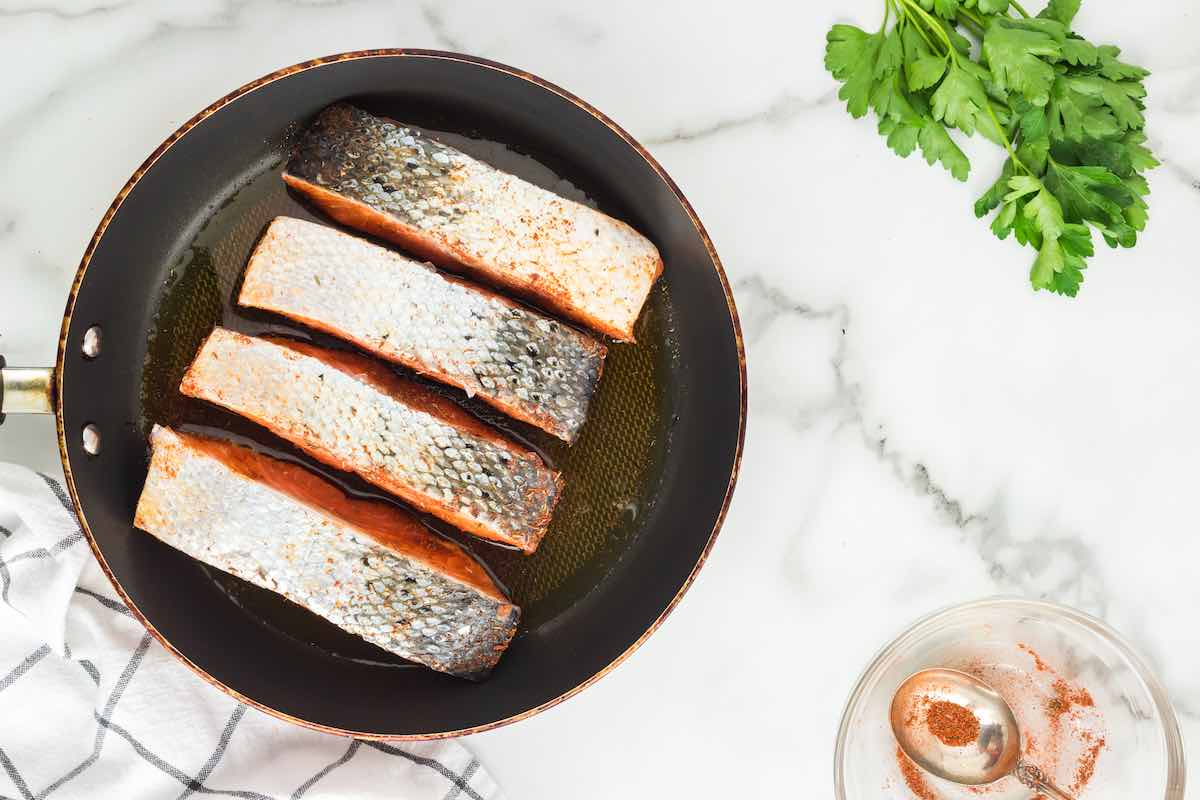
Step 2- Pan-sear. Heat butter and oil in a cast iron skillet over medium-high. Add salmon skin-side down and cook 4–5 minutes.
Step 3- Flip. Using a fish spatula, carefully flip the salmon fillets over and cook for another 2-3 minutes until fully cooked.
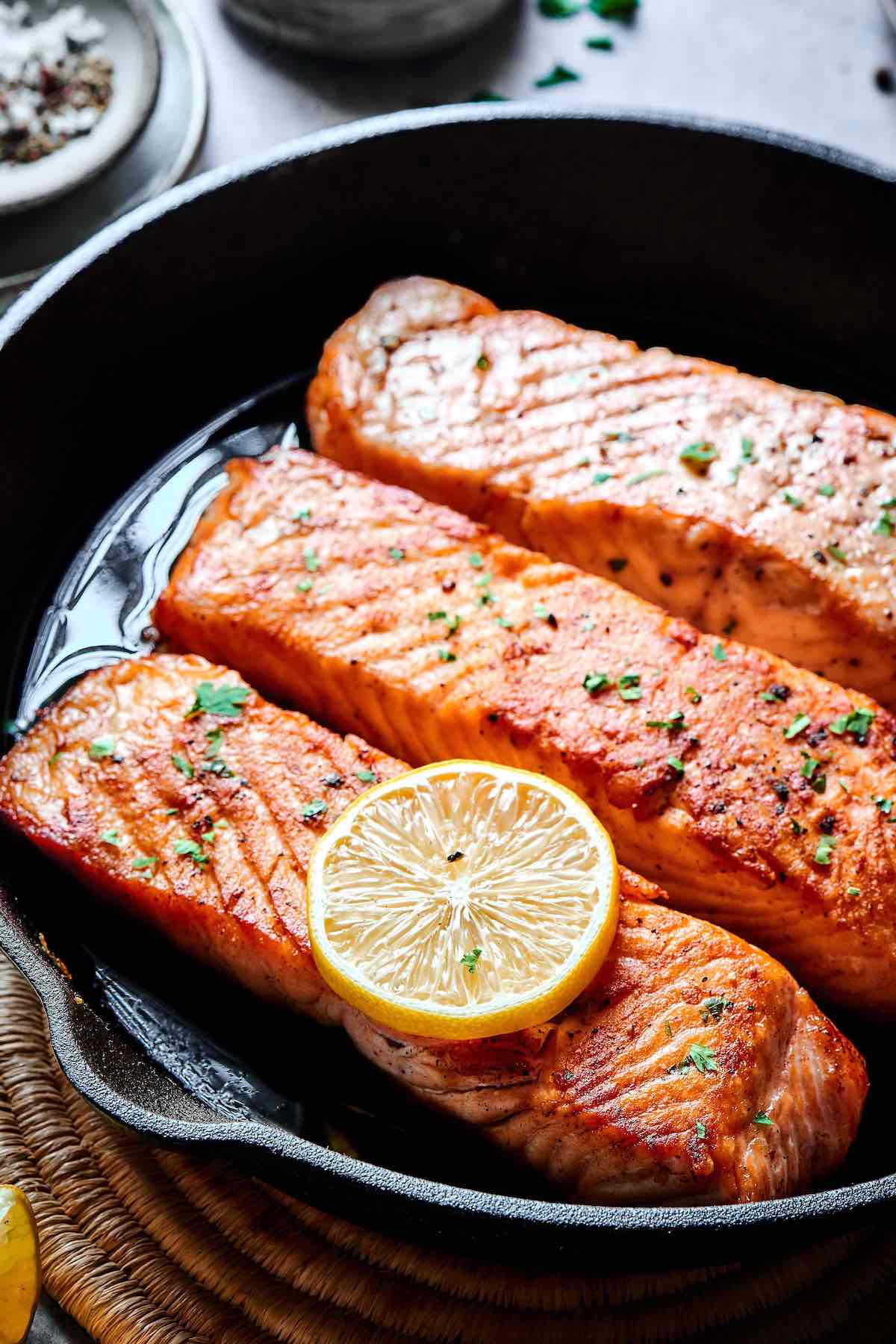
Arman’s recipe tips
- Look for fillets of the same thickness. So they cook evenly.
- Use an instant-read thermometer. Look for an internal temperature of 145F/63C to know when the salmon is done cooking. If you don’t have a thermometer, press on the fillets with a fork. If they flake easily, it’s time to remove them from the heat.
- Don’t touch the salmon! I know it can be tempting, but try not to move the salmon until it’s time to flip. This helps ensure a proper sear and crust on both sides.
- Don’t have time to thaw frozen salmon? Submerge the fillets under cold water for 30 minutes, then pat the fillets with paper towels.
Storage instructions
To store: Leftover cooked salmon should be stored in an airtight container in the fridge for up to three days.
To freeze: Put cooked and cooled fillets in a freezer-safe container and freeze for up to three months. Defrost the fillets in the refrigerator before reheating.
To reheat: Place cooked salmon fillets in a skillet with oil over medium heat, flipping often until warm.
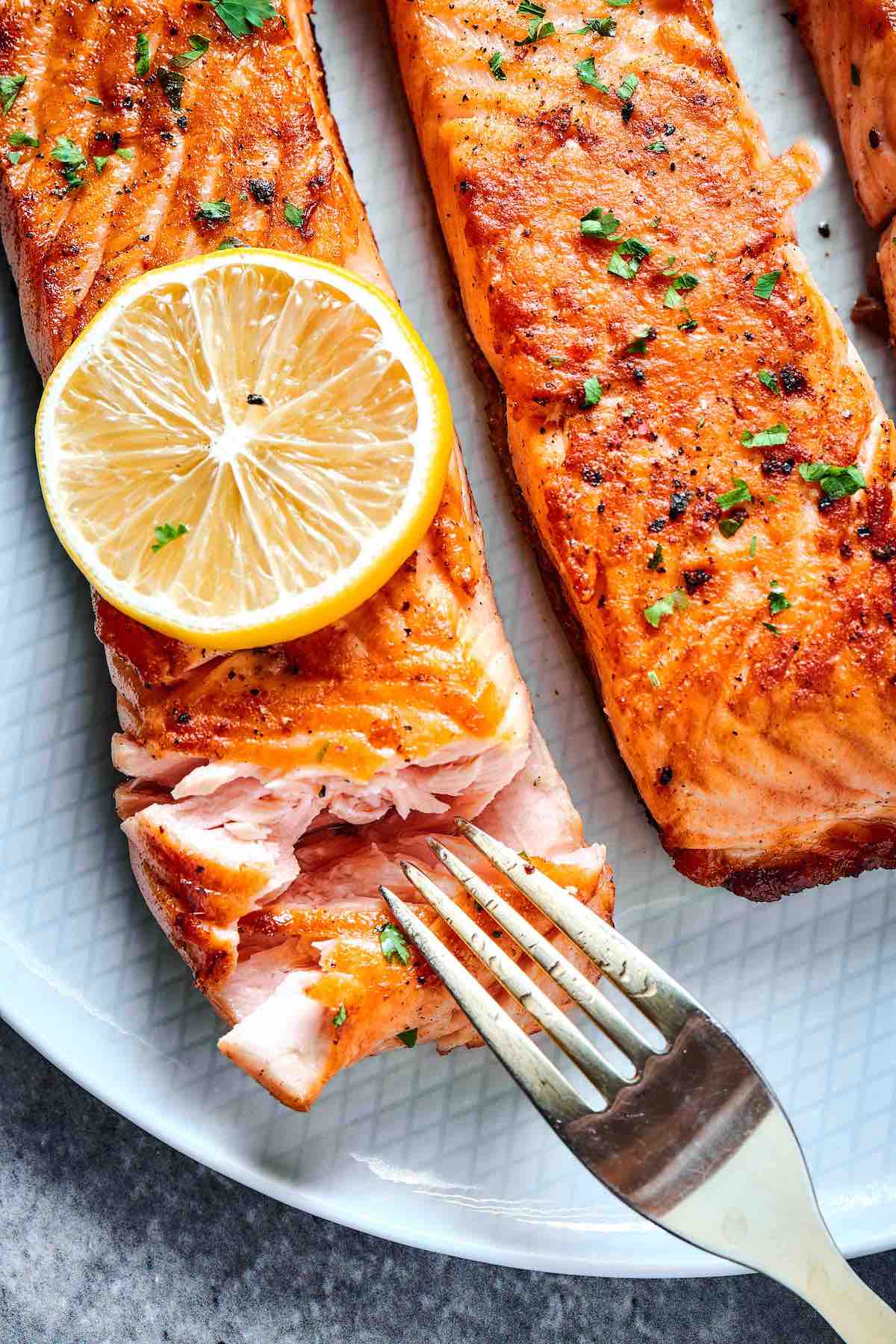
Frequently asked questions
If you are using skin-on salmon fillets, put them in the pan with the skin side down first. The skin will become nice and crispy, making it easy to flip the fillet with a spatula without damaging its integrity.
Frozen fillets will work, but they must be thawed overnight in the fridge.
More delicious ways to cook salmon
If you tried this pan-seared salmon recipe or any other recipe on The Big Man’s World, please rate the recipe and let me know how it went in the comments below. It really helps others thinking of making the recipe.
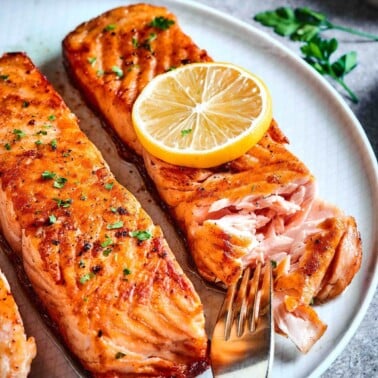
Pan Seared Salmon
Video
Ingredients
- 4 salmon fillets 150 grams/6 oz
- 2 tablespoons butter
- 2 tablespoons olive oil
- 1/2 teaspoon salt
- 1/2 teaspoon pepper
Instructions
- Pat the salmon fillets dry with paper towels and season them generously with salt and pepper on both sides.
- Heat a large skillet over medium-high heat and add the butter and olive oil.
- Once the butter has melted and the skillet is hot, carefully place the salmon fillets skin-side down in the skillet.
- Cook the salmon for 4-5 minutes on the skin side, without moving them, until the skin is crispy and golden brown.
- Using a spatula, carefully flip the salmon fillets over and continue cooking for another 2-3 minutes until the salmon is cooked through, but still moist and tender in the center.
Notes
- Cook with aromatics. Sauté diced garlic and onion with the butter mixture before adding the salmon.
- Add Mediterranean flavors. Toss sundried tomatoes, capers, and kalamata olives into the pan, and top the cooked salmon with crumbled feta cheese.
- Garnish with fresh herbs. Cook sprigs of fresh rosemary, dill, or thyme in the pan with the butter.
- Serve with lemon garlic butter sauce. Sauté garlic and lemon zest with the butter, then serve the salmon with fresh lemon juice.
- Add an Asian sauce. For some Asian salmon flavors, drizzle some katsu sauce, eel sauce, or bulgogi sauce.
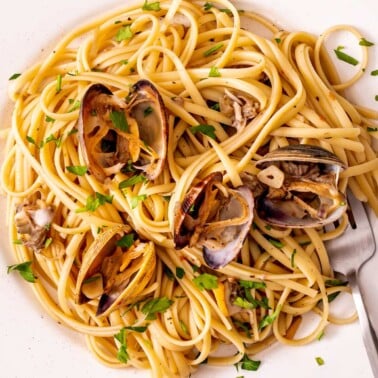
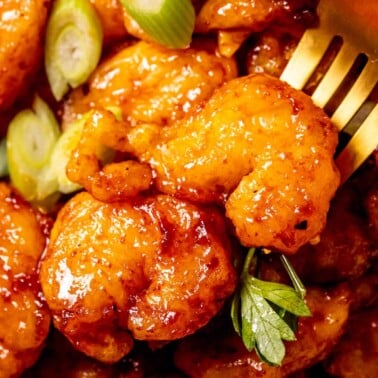
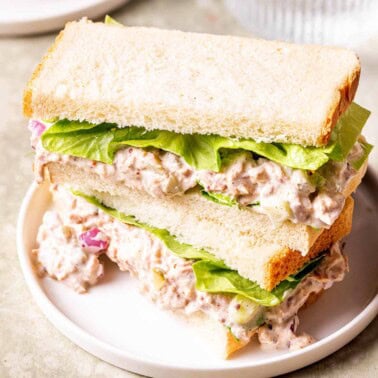
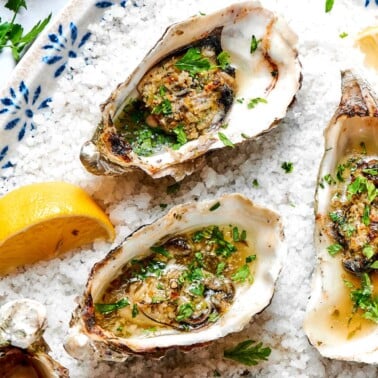














Wow! What a great recipe this is, I’ve made this as you do, but not in years. I loved it so mush and so did my Family. Smoochie the Baby Pooch please, for me. Thanks!